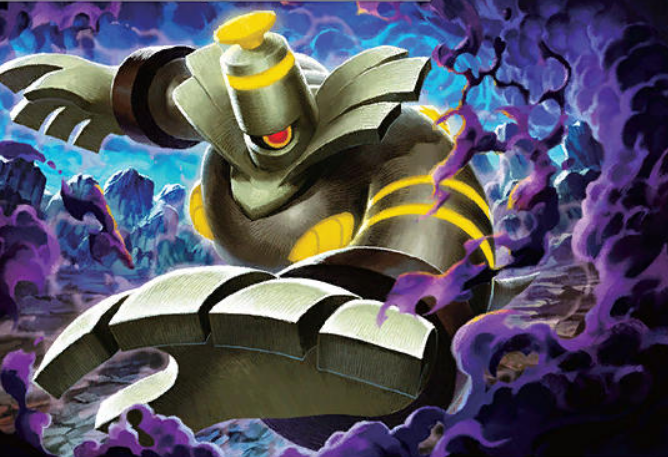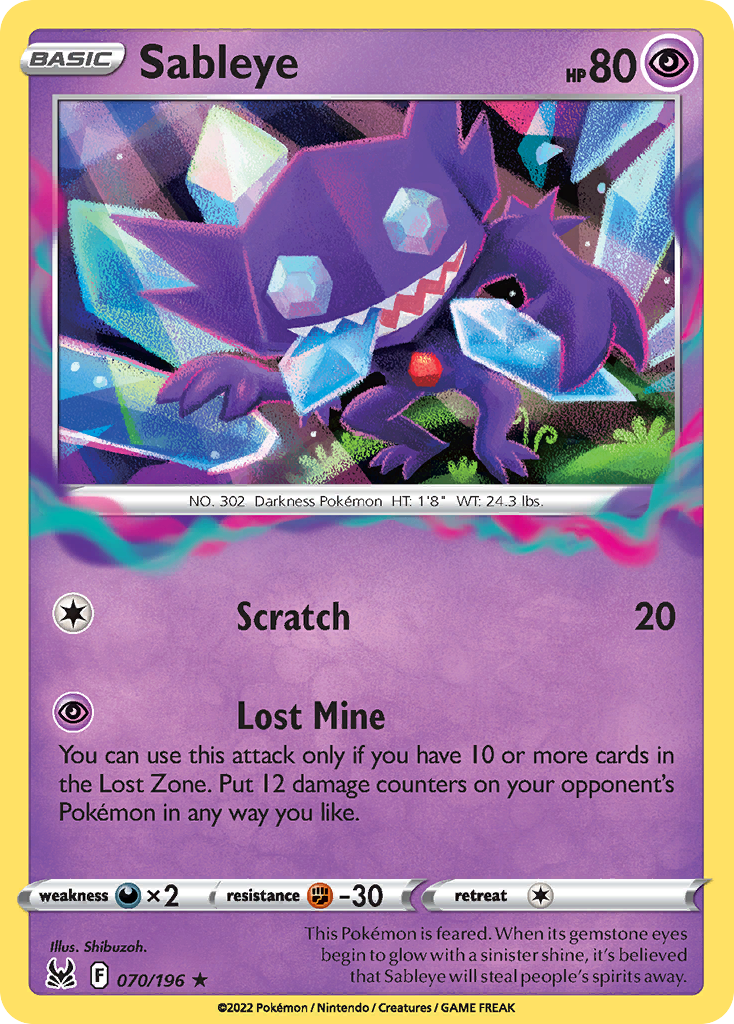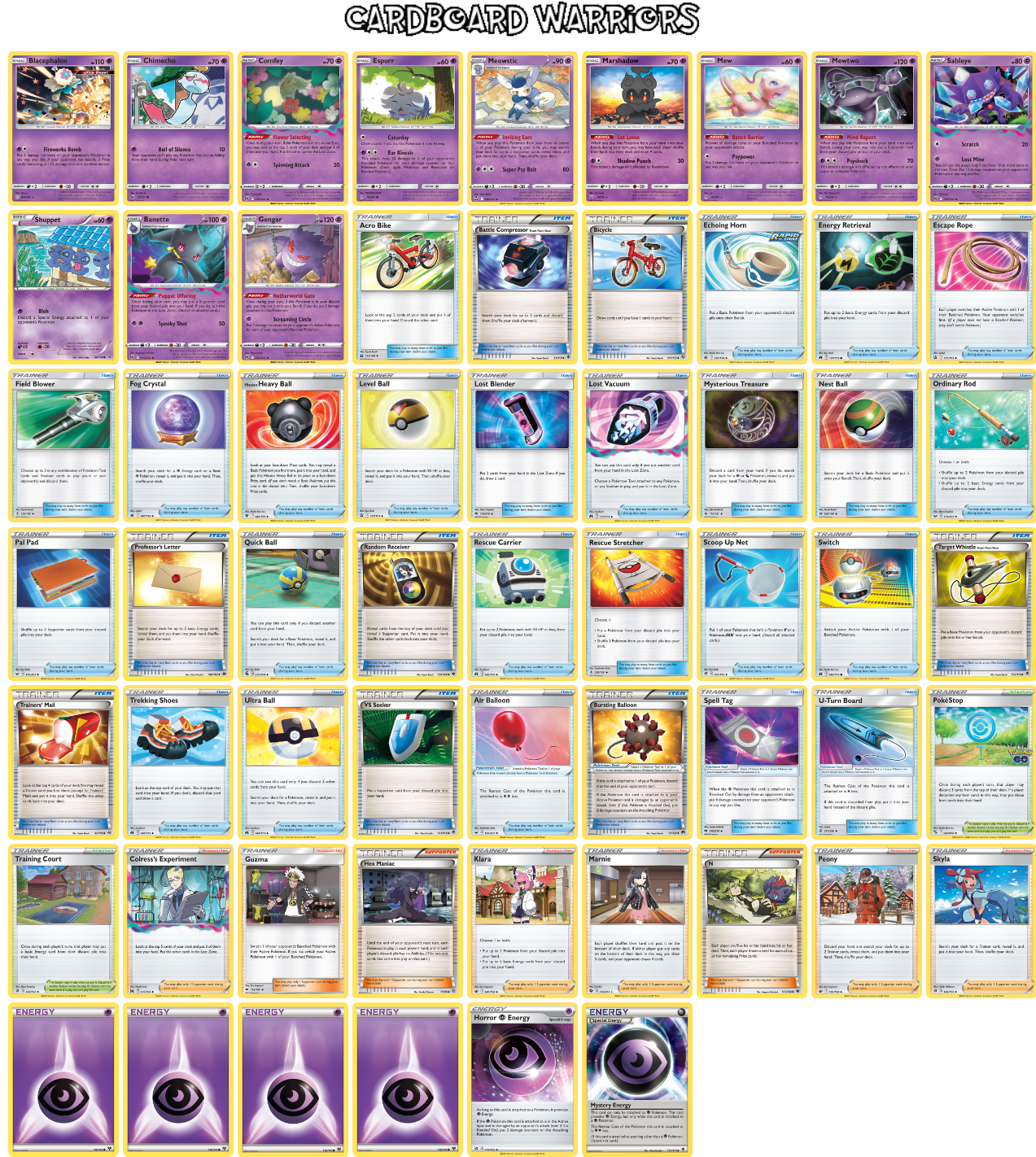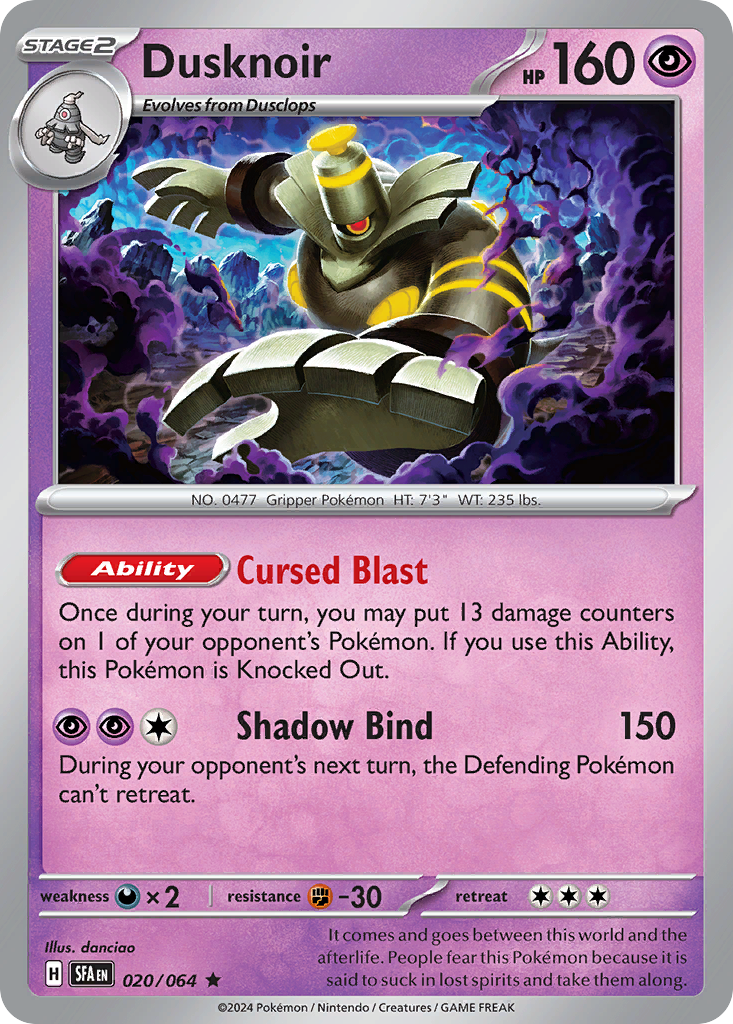GLC Lost Zone Psychic Deck

Lost Bomb
Long time no see Cardboard Warriors, I hope everyone has been doing well and enjoying the best way to play Pokémon. I on the other hand, have been mostly enjoying the standard format due to the loss of PTCGO. My GLC career was all but over until recently, but I’m finally back to help everyone update their Lost Circle, Lost Zone Psychic (LZP), or whatever you want to call this deck.

Baltimore Regionals was quickly approaching, and I knew I wanted to play in the GLC side event. I’ve played tons of games with LZP, so I decided to lock in this deck because I knew it would be the easiest for me to pick back up and do well with. With this being decided, I just had to refine the list. I looked at my CBW season 2 champion list and I realized that the only change I had made was cut Bursting Balloon for Gladion. A new ban list was also out and my beloved Marshadow was hit. This is a big and well-deserved hit for the deck. Most decks don’t have basic support mons that are on the same power level as a supporter. At the time I thought this would be the only change, but after looking at all the sets that have been released and deck lists from others, I knew more changes were needed.
A few days before the event, I found rdalton77’s Aggro Psychic deck in the CBW Community GLC Deck Lists page and I thought the list was ingenious. The deck looks very similar to the item-based engines that I had been working with to create LZP and it has energy efficient attackers, but this deck was essentially a “lost zone less psychic” deck. This deck also had all the new cards that I was considering, so the changes were easy and seamless.
Previous Iteration

Current Iteration
Changes:
Bursting Balloon => GladionEnergy Retrieval => Night StretcherSkyla => ArvenN => IonoOrdinary Rod => TulipMarshadow, Trekking Shoe, Acro Bike => 1-1-1 Dusknoir linePeony => Buddy-Buddy Poffin
A lot of the cards were interchangeable or clear upgrades over existing cards. Bursting Balloon was cut because it’s very easy to play around and I realized that prizing Colress was the main way I was losing games. Night Stretcher, Arven, Iono, and Tulip are clearly upgrades over their counter parts. Night Stretcher gets less cards, but I never need two energies at once and the utility of getting a Pokémon back is more impactful than that 2nd energy. Arven doesn’t grab stadiums or supporters, but it grabs more cards than Skyla and most of the time I would be grabbing a combo enabling item card anyway. Iono over N simply because it guarantees that I don’t draw the same cards. Tulip is a supporter, so I have more access to it than Ordinary Rod and it puts the cards directly back into my hand. This next change may seem a bit weird, because this is a Pokéstop deck, but I think it is always correct to play actual cards over item-based draw if your deck has better cards to play. This is the main reason why it was easy to include the Dusknoir line. Acro Bike and Trekking Shoe are also the worst of the item draw cards when compared to Bicycle, Random Receiver, and Trainers’ Mail. The last card that is directly an upgrade is Buddy-Buddy Poffin over Peony. Both cards get me more cards, but one can always be used regardless of if I go 1st or 2nd, and it doesn’t have the downside of discarding my hand.

There is one more change that wasn’t listed above and that’s Enhanced Hammer over Marnie. This was the hardest card for me to cut. Marnie is overall a better card than Enhanced Hammer, but after reading through some discussions in the CBW discord server, I saw that LZP had a hard time dealing with Mist Energy and Wash Energy. At the time, I thought this deck had no way of dealing with these cards, so Enhanced hammer felt like a necessary include.

Now that we have updated the list, lets talk about the combos. By combos, I specifically mean Dusknoir and how it interacts with the rest of the deck. Dusknoir’s Cursed Blast ability knocks itself out and places 130 damage counters, this fits the decks’ theme of placing damage counters when a certain condition is met through Sableye’s Lost Mine and Blacephalon’s Fireworks Bomb. Dusknoir’s ability translates to Cursed Bomb in Japanese and coincidentally, these cards are the perfect pair. Blacephalon requires the opponent to be at 3 prize cards to use the full effect of its attack. Dusknoir lets you proactively speed up that process instead of waiting for your opponent. This lets you place a 250-damage counter in one turn, which lets you ko any Pokémon in GLC or better yet, you can ko multiple Pokémon and take multi prize turns. Between these plays and using Echo Horn and Target whistle, this deck has tons of ways to manipulate your opponent’s board and take prizes however you want.

Another cool thing about Dusknoir is that it’s a support Pokémon that feels like it’s also an attacker. A single use of Dusknoir means that you can recover Sableye at least one less time per game. It lets you need less resources throughout a game, so you can make more aggressive plays that will punish your opponent. Dusknoir can also be seen as draw support like Unown because it typically draws a prize card. Throughout my games in Baltimore, I realized that Dusknoir being a pseudo attacker has made Gengar seem obsolete. Previously, I felt that the deck needed some early game attackers. Chimecho and Gengar were the solutions I arrived at. Chimecho is still my favorite card in the deck, and I think it is a mandatory include, but Gengar constantly felt like a brick whenever I drew it, and I didn’t use it the entire tournament. If Gengar is no longer needed, battle compressor has less value as well.
The next cool thing about Dusknoir is that Cursed Bomb is an ability that counters your counters. This alongside Enhanced Hammer, Spell Tag, and Hex Maniac allows the deck to deal with its weaknesses. When your opponent takes a ko on a Pokémon with Spell tag you can place 4 damage counters. Then you can clean things up with Dusknoir, which gets around Mist Energy, Wash Energy, and Snorlax’s Unfazed Fat Ability. This deck already had to tech for these things, but now you have another way to deal with your counters that have uses in other ways. The overlap is what truly makes this a powerful combo and improves this decks strength. Moving forward, I think this deck is still fun to play and is in a great spot in the current meta. Throughout the six rounds I played in Baltimore the least impactful cards were Gengar, Battle Compressor, and Mew. I didn’t really use these cards, besides having easy decisions when I lost zoned them. Cards to consider are Mysterious Tail Mew for more consistency or Memories of Dawn Mew so you have to recover Sableye less. Unown is similar to shoe and bike but its searchable and recoverable like Marshadow. Faba for more counter play like Enhanced Hammer except it can help you put your stadium in the lost zone. The last cards I’d consider are Rare Candy, Wally, Thorton, Bursting Balloon and Vengeful Punch. The Dusknoir plays have become such an important feature that getting them out faster or having more cards to combo with it could be the way to go in the future.